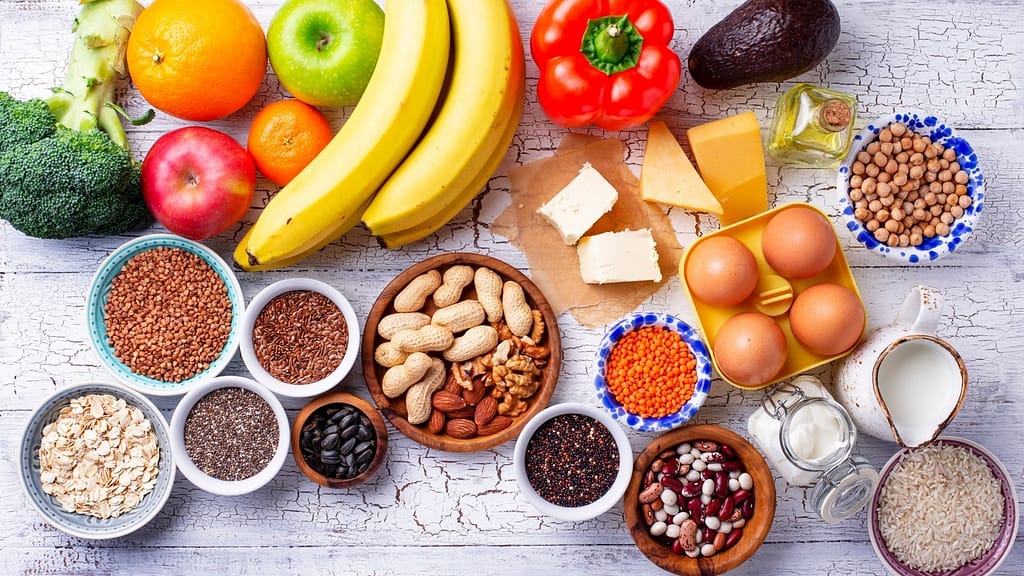Gestational diabetes is a type metabolic dysfunction that develops in women during pregnancy. Usually diagnosed in 24th to 28th weeks of pregnancy, about 4% of pregnancies present with this complication today. Its rate is increasing lately with modern lifestyle...
Gestational diabetes is a type metabolic dysfunction that develops in women during pregnancy. Usually diagnosed in 24th to 28th weeks of pregnancy, about 4% of pregnancies present with this complication today. Its rate is increasing lately with modern lifestyle habits and food intake patterns.
Usually, high blood sugar levels are detectable during second and third trimester of pregnancy. The women who have never had Diabetes before in life can develop it suddenly during the pregnancy. In most of the women, blood sugar levels reach normal limits after the delivery of the baby but a few women become Diabetic for the rest of their lives.

This situation should be managed urgently as it poses threats both mother and baby. E.g. Baby may develop hypo-glycemia due to the over effects of Insulin which also needs close attention and timely management. Babies sometimes also face irregular weight gain issues before birth along with a comparatively higher risk of developing obesity and diabetes in later life. On the other hand, mother can develop permanent diabetes in later life and/or might have to undergo caesarean section for baby’s birth.
Although there is no direct reference of “Gestational Diabetes” in Ayurvedic texts, there are references of Garbha Varidhi. Garbha Varidhi is a complication of Pregnancy described with women’s abdomen rising more than usual for its gestation, big size of baby (macrosomia), difficult labour and increased perspiration. Also, once Diabetes develops in gestation, it is counted as one of the Pramehas (Urinary flow problems) in Ayurveda and is named as one of the “Madhumehas” (sugar in urine) and managed likewise only. Other Madhumeha are Type 1 and Type 2 Diabetes.
Reason For Developing Gestational Diabetes
During Pregnancy period, hormonal changes occur in a lady. Some of these hormones impede or dampen the effects of normal insulin produced in the body. Reason being that the excess sugar is readily available to the baby for his/her development. But this also leads to a compensatory overdrive by the body to produce a bit extra insulin for eliminating this excess sugar in blood. In some women, this compensatory insulin is not produced enough to overcome the surge of sugar in blood. This finally leads to Gestational Diabetes.
It is also thought that when a pregnant women’s body produces antibodies against her own pancreas, it causes lesser insulin release. This is also a potential cause for diabetes.
Gestational diabetes can be intelligently managed in the Ayurvedic way if one is aware of the risk factors and is willing to bring a lifestyle change including exercise and food intake as per the directions of Ayurvedic texts.
High Risk Factors Of Gestational Diabetes
Besides other direct causes, there are certain factors which can increase the risk or are indicative of developing Gestational diabetes in pregnant women. They are:
Age of mother over 30 yearsHistory of Diabetes in her familyBirth weight of previous delivered baby above 4 kgsPersistent glycosuria (outflow of sugar in urine)ObesitySmokersPregnancy with Twin babiesStillbirth in previous deliveryExcess of amniotic fluid or placental abnormalities in the scans of the babyBelonging to certain Ethnic groups like East Asians, blacks, Hispanics, native americans and Pacific islandersRecurrent Vaginal/ urinary or Uterine infections in the present gestational duration are also indicative of possible development of excess sugar in blood and hence Gestational Diabetes.Unhealthy food practicesPhysically very inactive lifestyleMedical history showing conditions like hypertension, polycystic ovary syndrome, cardio-vascular disease and/ or metabolic syndromes.Diagnosis Of Gestational Diabetes
Gestational Diabetes usually presents late in second trimester and third trimester and so detection is sometimes delayed. Once diagnosed, the treatment is aimed to keep sugar levels fasting – 90-99 mg/dl and post prandial under 120 mg/dl.
Diagnosis is done in the suspected individuals or those having above risk factors before 28 weeks of gestation. Oral Glucose Tolerance Test (OGTT) is carried out and if found to be positive, urgent measures to control blood sugar are initiated.According to Sushruta, the Father of Surgery in Ayurveda, Madhumehi (the one who developed Diabetes) would behave in a certain way. He observed that a Madhumehi would have a desire to sit if she is standing, would like to stand if she is sitting. If sitting, she would want to lie down and vice versa. It seems to be unsettling and unrestful for the woman.Apart from this, always watch out for the symptoms below which are also indicative of diabetes.Symptoms of Gestational Diabetes
Gestational diabetes may present with one or more of these symptoms :
Increased frequency of UrinationConfusionConstantly feeling thirstyA feeling of weakness/ FatigueIncreased appetite and decreasing weightPersistent tirednessSudden or excessive hungerHeadacheMild hypo-glycemiaSweatingIrrational thinkingAyurvedic Perspective Of Gestational Diabetes
In classic ayurvedic scriptures, diabetes is named as one of the “Prameha”. Prameha is a broader term that encompasses all types of Pra– flow Meha– urine (Urinary Flow) diseases. Amongst these, Diabetes is subcategorized as Madhumeha where Madhu-Sweet/sugar and Meha-urine.
Diabetes and discussion of Gestational Diabetes also comes under this topic.
Garbha Varidhi is Ayurveda is to be managed with a lifestyle that help in reducing aggravated dosha- dhatus.
Now if we talk particularly about Gestational Diabetes, there is a set of instructions to deal with the situation on the basis of 3 pillars- Aahaara (Food), Vihaara (Lifestyle modifications) and Aushadha chikitsa (Medicinal Therapy). We will now discuss how these 3 steps individually and then all in unison help us manage this condition.
 Healthy Diet
Healthy Diet
Aahaara /Diet:
Even though there is a high urge of eating in Pregnancy, Ayurvedic principals of Aahaara advocate the importance of eating nutritional rich foods rather than just about anything and anytime wanted. Ayurvedic Diet that helps in the management of gestational diabetes:
Daily intake of 1-3 grams of turmeric mixed in some Aloe Vera pulp is a measure to avoid Diabetes development in the First trimester.Wheat, Rice and Kodo millets that are cropped within 60days are great for intake in pregnancy.Intake of fruits like Apple, Orange, Amla/ Indian Gooseberry, Watermelon, Jambu/ Java Apple and Kaitha / Wood apple should be encourage.Intake of fresh natural seasonal produces are recommended and refined flours and articles are to be avoided. This is because refined flours and products result in instant hike of carbohydrates which is not desirable. Instead whole grains provide for a slow-release of carbohydrates for proper breakdown and constant release of energy.20-30mls of either White Pumpkin or Karela/ Bitter gourd juice should be taken first thing empty stomach in the morning time.Pulses: Horse gram, green gram and Pigeon pea are the desirable choices in pulses.Soak Methi/ Fenugreek seeds in a cup of water overnight and eat these seeds in the morning empty stomach.Oils: Castor oil, mustard oil, flax seed oil and desert date oil are ideal for cooking food in pregnancy.Vegetables: It is best to include bitter gourd, fenugreek leaves, green banana and Amaranth leaves in food.Barley grain is very powerful in controlling Diabetes. It should be included frequently in diet of a pregnant woman in different ways.Herbs: Matsa, gudmaar, fenugreek, gokshura, coriander, honey, masta and triphala are useful for managing hyperglycaemia.Lean proteins like beans, chicken and tofu are good choices to include in food.Include fruits and yogurt in diet.Brown rice, oats and whole grains are also welcome.Food To Avoid In Pregnancy & Gestational Diabetes
Ayurveda instructs to refrain from some food items in cases of Gestational Diabetes or even for high-risk group who have a chance of developing it. These are:
Avoid Sugary foods.Avoid too oily and fatty foods esp. containing saturated and trans-fats.Avoid alcohol, aerated drinks and fermented foods.Avoid intake of Kidney beans and black gram in pulses.Rice and potato should be taken in moderation or avoided altogether.| Vegetables | Bitter vegetables like methi (fenugreek) leaves, karela(bitter gourd), tomatoes, spinach, cucumber, radish, sponge gourd, sahjan(drumstick) leaves & fruits, broccoli, cauliflower, cabbage |
| Pulses | Moonga(green gram), chana daal(Bengal gram), raungi/lobia(black eyed pea), kaabuli chana(chick pea) |
| Spices | Turmeric, cinnamon, fenugreek seeds, garlic |
| Cereals | Wheat, (jau) barley, oats, shashtika rice, bajra(pearl millet) |
| Fruits | Plums, kiwi, lime, oranges, guava, apple, peaches, gooseberry |
| Dry Fruits | Almond, apricot, walnut |
Vihaara /Lifestyle Modifications For Gestational Diabetes As Per Ayurveda
Ayurveda recommends a holistic and clean lifestyle for management of Gestational Diabetes.
Healthy weight should be maintained at the time of conception. Overweight women are more at risk for developing gestational Diabetes. Now recent researches also prove that a BMI above 25 increase the risk of gestational diabetes.Regular yoga exercises like Pranayamas are beneficial.Exercising significantly reduces the chances of getting gestational diabetes. Exercise is very important tool to be included in life both before and during pregnancy. Exercise helps our body to become more sensitive to the insulin created by the pancreas. It is very necessary to become physically active before pregnancy. A 30-minute moderate exercise can be helpful in lowering the risk of gestational diabetes.Be active but not hyper- active.Take regular oil massages and steam bath. They also help ease the tension in the muscles.Take sitz bath or shallow warm bath below waist in genital area often.Yoga: Yoga plays an important role in the ayurvedic treatment of gestational diabetes. It consists of aasanas, pranayamas, meditation and deep breathing exercises. During pregnancy, women go through various physical and psychological changes.. Yoga can be helpful in improving overall health by increasing self-awareness and thereby reducing stress levels.When performing yoga during pregnancy, the following should be kept in mind:
1) Yoga should not be practiced on an empty stomach.
2)Yoga should be practiced from 18 to 32 weeks of gestation.
3)Yoga poses involving twisting, lying on the abdomen should be avoided.
Meditation:
Mental and emotional stresses of pregnancy have an indirect adverse effect on uterine environment and the consisting baby. This is why importance of Meditation is evident. A healthy state of mind with a healthy body in unison result in a smooth delivery.
Yoga Aasanas / Exercises for all Trimesters of Pregnancy:
 Yoga During Pregnancy
Yoga During Pregnancy
First Trimester asanas
Gentle twists lying on the back touching the ground.Baby poseTadasana (Mountain pose)Adho mukha svanasana (Dog pose),Vrikshasana (tree pose),Surya namaskar (sun salutation-I),Supta Baddha KonasanaMarjariasana (Cat pose)UttanasanaSecond Trimester asanas
Lying on the back or on the side and doing gentle twistspelvis and hip openers with gentle twists.Setubandha aasanaSupta Baddha Kon aasanaUttanasana– sun salutation-I with variations,Upavishta Konasana,VajrasanaKati–Chakrasan (Waist Rotating Pose).Poses that allow pelvic asymmetry,Baddha Konasana,Prasarita Padottanasana (wide legged forward bend) when seated.Trikonasana,Ardha Chandrasana (Half-moon pose with and without the wall),Virabhadra asana (Warrior pose),Poses dealing with strengthening and releasing of the shoulder girdle,Baby poseMatsya Kridasana (Flapping Fish Pose),Vajrasan (Thunderbolt Pose),Third trimester asanas:
Ardha Titali Asana (Half Butterfly) and Poorna Titali (Full Butterfly) asana.Less lying on the back and more variations on the side.Virabhadra asana (Warrior pose),Pelvic opener stretches.Stretches to promote pelvic asymmetry.Contracting and compressing the pelvic floor compared to releasing and relaxing it.Cat pose.Modified sun salutation, sun salutation-I with variations and modifications, warrior poses.Baby pose.Strengthening the thighs and shoulder girdle with gentle stretches and twistsAushadha Chikitsa/ Medicinal Therapy for Gestational Diabetes:
Below are the best Ayurvedic Herbs to treat Gestational Diabetes. In Ayurveda many different herbs are recommended individually or in combination to treat Gestational diabetes.
Vijaysaar
Vijaysaar is named scientifically as Pterocarpus marsupium. The heartwood of Vijaysaar is used to make tumblers/ vessels and beakers wherein water is left overnight to have in the morning daily. Intake of this water has anti-glycaemic effects. The presence of Epicatechin in Vijaysaar has properties of enhancing Insulin production and release. When Vijaysaar is consumed it activates the pancreatic ?-cells due to the production of insulin. Also it helps in conversion of proinsulin to insulin as shown in vitro experiments now.
Guduchi
Guduchi or Tinospora cordifolia has anti-glycaemic properties, through which it can aid in lowering the blood sugar levels. Its crop is abundantly found in India.
Bhuiamala
Bhuiamala is an herb which belonging to the family of Euphorbiaceae which is distributed widely in hotter areas of India like Deccan and South India. Scientifically named Phyllanthus amarus, it has potent blood sugar lowering, anti-oxidant, anti-inflammatory, anti-mutagenic activities.
Tulsi
Tulsi or Ocimum Sanctum is widely revered in Indian households as a pious Deity. It has many medicinal and healing properties. Tulsi is hypoglycaemic in nature and acts by improving insulin secretion and pancreatic beta ß function. It also increases the glucose intake by muscle cells. Hence Tulsi is beneficial in lowering blood sugar levels. For the method of consumption, one can chew Tulsi leaves or make Tulsi tea. Also, it can be soaked overnight in water and to be drunk in the morning empty stomach.
Amalaki
Amalaki, commonly known as Amla in India is found effective in the management of pancreatitis. Thus, its beneficial effects on pancreas are evident. Chromium present in Amla increases our body’s response to insulin. It can be consumed regularly in the form of amla juice, amla murabba (sweet pickle) or amla powder.
Gurmar
Gurmar is a magical herb which literally means “Sugar-killer” in Hindi. It has been used since ages as a remedy for treating diabetes- type 1 and type 2. It aids in reducing blood sugar by increasing the insulin levels in our body. Triterpenoid and saponins present in Gurmar are known to supress the taste of sugar on the person’s tongue. It can be consumed by mixing its powder in water 30 minutes after lunch daily.
Ashwagandha
Ashwagandha has shown benefits for gestational diabetes apart from a multitude of benefits in other disorders. Phytochemicals present in Ashwagandha help regulate secretion of insulin in Gestational and Type 2 Diabetes. It also promotes health by maintaining adequate weight and empowers with the strength which is very much required for both mother and baby during pregnancy.
In order to consume Ashwagandha, take its powder (aka Ashwagandha Churna) and mix thoroughly in milk. Have it in recommended times and dosages as per an Expert Ayurvedic practitioner’s advice only.
Neem
Neem is also a widely available herb that has anti-diabetic, anti-malarial, anti-oxidant and hepato-protective properties.
Bel / Bilva
Aegle marmelos by Scientific name, this herb is also exhibits hypoglycemic activity. It is now shown to prevent peak rise in blood sugar after 1 hr of food ingestion as documented after oral glucose tolerance test.
Home Remedies To Control Blood Sugar During Pregnancy
Bitter gourdCharatin and momordicin present in Bitter Gourd help in lowering the blood glucose. Drink bitter gourd juice every morning on an empty stomach.
Jamun seed powderJamun seed is hypoglycaemic which means it reduces the blood sugar level. In a glass of water, add jamun seed powder and stir it well. Have this water in the morning.
GingerGinger is known to control not only abnormal blood sugar levels but alsoregulate insulin levels. Boil a piece of ginger with a cup of water in a saucepan. Simmer for 5 minutes and then strain. Drink this water twice a day in divided portions .
Curry leafCurry leaves help in reducing blood glucose level and improves insulin sensitivity of our body. One can chew a few curry leaves or add it in your dishes.
FenugreekFenugreek is known to help in increasing glucose tolerance thus aiding lowering of blood glucose level. Soak a teaspoon full of Fenugreek seeds in water overnight and drink it in the morning on an empty stomach. One also has to chew the seeds along with it.
Aloe vera juiceAloe vera contains phytosterols which is helpful in controlling blood sugar. Drink aloe vera juice twice a day.
MoringaMoringa is a plant rich in Vit C and antioxidants that help in treatment of Diabetes (especially the diabetes acquired in later life and not congenital diabetes).
CinnamonCinnamon helps lower sugar levels by reducing the oxidative stress. In warm water add half a teaspoon of cinnamon powder and drink this daily to control blood sugar levels.
Mango leavesDrinking tea made up of mango leaves can aid in reducing blood sugar levels. The mango leaves should be boiled for 15 minutes and drink it on an empty stomach.
Conclusion
Ayurveda and its natural remedies play have an immense potential in controlling Gestational diabetes. Exercising, following a healthy daily routine and monitoring the food we eat holds a major role in controlling gestational diabetes. Ayurvedic herbs like Vijaysaar, Guduchi, Bhuiamala, Gudmaar and Tulsi can aid in this condition. Likewise, Yoga and meditation play an important role by relieving stress and making a safe environment for mother and baby both.
As they say “Let food be thy medicine and medicine be thy food “. Food is the best medicine given to mankind by the God.
Did you find this post useful? Would you like to get back to it later? Save THIS PIN below to your Pinterest Natural Living or Ayurveda board!

The post Managing Gestational Diabetes – An Ayurvedic Approach appeared first on Honey Fur For Her.







